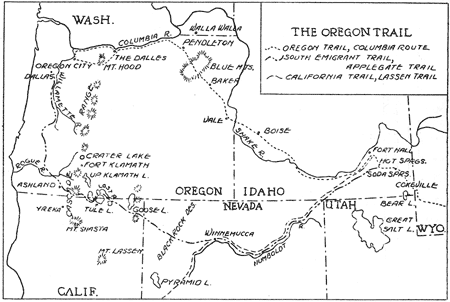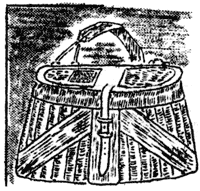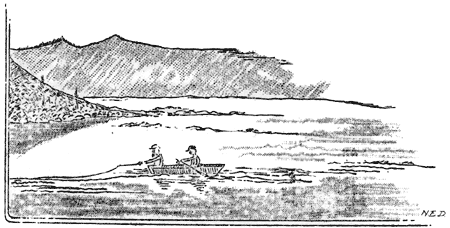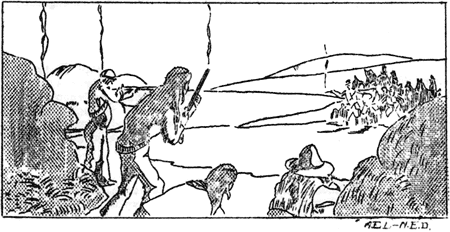*Diller, J. S. and Patton, H. S., The Geology and Petrography of Crater Lake National Park, U. S. Geol. Sur. Prof. Paper 3, P. 20, 1902.
A creel census of the fish caught in Crater Lake during the month of July 1937 showed interesting results. Catches included two species, rainbow trout (Salmo irideus) and silverside salmon(Oncorhyncus kisutch). The table on the following page shows that 0.83 fish were caught per angler per hour of fishing. This figure is low because the census includes only the returns from boats fishing over the southwest portion of the lake. Fish caught over the northeast portion of the lake, in the vicinity of the Wineglass, as well as a few catches made in the southwest portion after 7:00 p.m were note recorded. Very little angling from shore was observed during the month, consequently the census of boat fishing gives a fairly accurate check on the total fish catches. Analysis of the catch per hour of fishing indicates that every fisherman did not catch 0.83 fish every hour he fished. The good fisherman returned the bigger catches.
Needham (1937) recorded 0.21 fish per angler per hour in Convict Lake in California. This is the only available paper* dealing with lake economics. Comparison of the data for Crater Lake with Needham’s report on Convict Lake indicates that Crater Lake is a good fishing lake.
Silverside salmon dominated the catches of the first three weeks of July. During the last week of the month there was a marked increase in the number of rainbow trout caught. This observation may indicate that the spawning procedures of the rainbow trout reduced the feeding activities of this species to such an extent that lures held no enticement for them.
The smallest fish taken from the lake measured 8 inches; the largest, a rainbow trout, measured 27 inches. This large fish weighed 7 lbs. and was a veritable veteran. A microscopic analysis of its scales indicates that it was starting the seventh summer of life. For the month the average length of fish caught was 16.46 inches for rainbow trout, and 16.11 inches for silverside salmon. The ages varied between 3 and 5 years.
Very few fish returned to the checking station were observed with empty stomachs. Autopsy of the fish revealed that the stomachs were crowded with water fleas, shrimp, snails, and periwinkles. As a rule the diet was predominately one of these foods. Mixed diets were not in order during July.
The favorite gear for trolling was the Davis spinner. This was used most successfully around the shores of Wizard Island. No deep water fishing was reported. Fishing in the 100 foot water with copper line might be encouraged. Fishing at such depths with copper line proved successful in a number of instances during the summer of 1936. Moreover, the most abundant supply of water fleas is found in the 100 foot stratum.
*Needham, P. R., Methods of Measuring Angler’s Catches in Inland Waters, Copeia, No. 1, April 10, 1937, pp 41-48.
ANALYSIS OF THE RECORDS OF CATCH FROM BOATS ON CRATER LAKE
July 1 to July 31, 1937
|
|
||||
| No. of Boat Reports |
No. of Anglers |
Total Fishing Hours |
No. of Fish Taken |
Catch Per Angler Per Hour |
|
|
||||
| 317 | 721 | 920 | 767 | 0.833 |
|
|
||||
ADDITIONAL COMPUTATIONS
|
2.8 1.06 2.4 2.2 1280.0 lbs. 1.66 lbs. 16.5 in. 16.1 in. |
Outline Of Events In The History Of The Modoc War
By Don C. Fisher, Assistant Chief Ranger and
John E. Doerr, Jr., Park Naturalist
(Continued from the June 1937 issue of Nature Notes)
Part I of this outline appeared in the June 1937 issue of Nature Notes from Crater Lake National Park. The first part covered the period 1846-70. In southern Oregon and northern California those were years of struggle between the white settlers and the Modoc Indians. Many of the events leading up to the Modoc War took place in that period of years. Part II of this outline covers the years 1871-73, including the events immediately preceding the outbreak of the war and the first few months of actual warfare in the Lava Beds, an area now within Lava Beds National Monument in northeastern California. Part III will appear in the August issue of Nature Notes.

(click on image for an enlargement in a new window)
Part II
1871 – 1873
| 1871 | A separate reservation recommended for Captain Jack’s band of Modoc Indians. |
| Realizing that there was an unfriendly feeling between Jack’s band of Modocs and the Klamath Indians, the Superintendent of Indian Affairs for Oregon, A. B. Meacham, recommended to the Commissioner of Indian Affairs in Washington that Captain Jack and his band be given a separate reservation. Pending action on his recommendation Meacham instructed Captain Jack and his band to remain at Clear Lake. Refer to the sketch map on the following pages. | |
| 1872 January | Lost River settlers petitioned for the removal of Captain Jack and his band of Modoc Indians. |
| Instead of remaining at Clear Lake, Captain Jack and his band roamed the country molesting the settlers with the result the settlers in the Lost River region petitioned A. B. Meacham to remove the Indians to the Klamath Reservation. | |
| A. B. Meacham requested help from U. S. Army. | |
| On receipt of the petition, Meacham requested General E. R. S. Canby, Commanding General of Columbia, to remove Captain Jack and his band of Modoc Indians to Yainax on the Klamath Reservation. | |
| Meacham’s request forwarded to General Schofield. | |
| General Canby forwarded Meacham’s request to General Schofield, Commanding General of the Pacific, suggesting that before using force to get Captain Jack to the reservation, another peaceful effort should be made.Estimated population of Klamath County, Oregon, was between 300 and 400 white people. | |
| March | Reenforcements sent to Fort Klamath. |
| At the request of General Canby, the forces at Fort Klamath were strengthened by additional officers and troops from Fort (Camp) Warner. | |
| April | Council with Captain Jack at Lost River Gap. |
| On April 3 Major Elmer Otis, U. S. Army, held a council with Captain Jack at Lost River Gap, near what is now Olone, Oregon. This meeting was arranged at the request of General Canby who desired to attempt a peaceful settlement before using force. At that meeting Captain Jack and the important men of his band were distinctly hostile. Nothing was accomplished toward getting the Indians to the reservation. | |
| U. S. Commissioner of Indian Affairs requested that Captain Jack be moved to the reservation. | |
| On April 12 the Commission of Indian Affairs in Washington requested T. B. Odeneal, Superintendent of Indian Affairs for Oregon, to get Captain Jack and his band of Modocs to the reservation if practicable and to see that they were not molested by the Klamath Indians. | |
| May | Odeneal attempted to arrange a meeting with Captain Jack. |
| On May 14 T. B. Odeneal, carrying out instructions from Washington, sent Ivan D. Applegate and L. S. Dyer to arrange for a council with Captain Jack. Captain Jack refused to meet in council. | |
| July | Orders given to move Captain Jack and his band of Modoc Indians to the Klamath Reservation. |
| On July 6, 1872, the Commissioner of Indian Affairs in Washington directed Superintendent T. B. Odeneal to move Captain Jack and his band to the Klamath Reservation, peacefully if possible, forcibly if necessary. This order from the Commissioner was the result of Odeneal’s report on the failure of I. D. Applegate and L. S. Dyer to induce Captain Jack to meet in council. | |
| November | U. S. Army requested to force Captain Jack to the Klamath Reservation. |
| Despairing of a peaceful settlement, on November 27, Superintendent Odeneal requested Major John Green, C. O. at Fort Klamath, to furnish sufficient troops to compel Captain Jack to move to the reservation. | |
| Troops moved to Lost River. | |
| On November 28 Captain James Jackson commanding 40 troops left Fort Klamath for Captain Jack’s camp on Lost River. The troops, reenforced by citizens from Linkville (Klamath Falls) arrived in Jack’s camp on Lost River about a mile above Emigrant Crossing (Stone Bridge) on November 29. | |
| First battle of Modoc War, November 29, 1872. | |
| Firing began immediately after the Indians refused to give up their arms. After driving the Indians from camp, Captain Jackson ordered the troops to retreat to await reenforcements. The casualties in this short battle included one soldier killed and seven wounded, and two Indians killed and three wounded. | |






